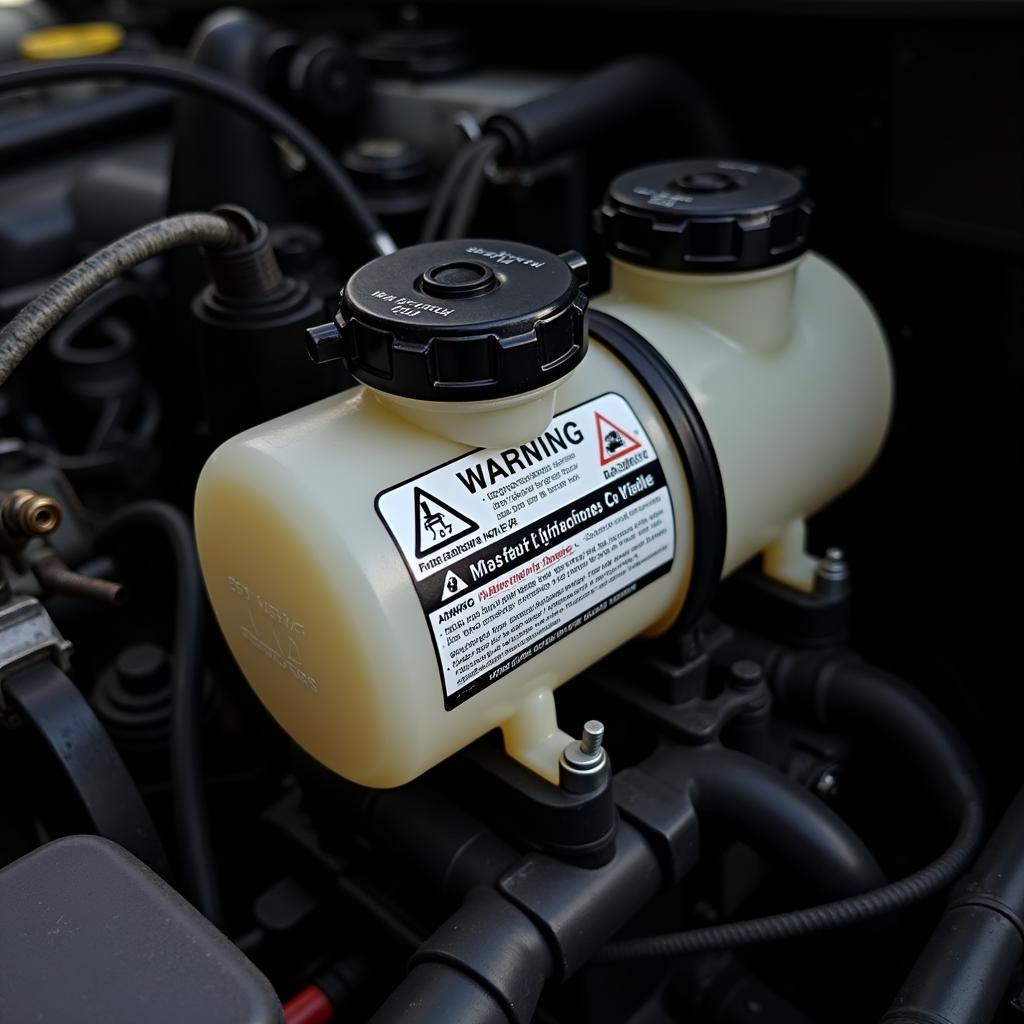Imagine this: you’re driving down the road, and your car suddenly starts beeping. A warning light pops up on your dashboard, accompanied by the dreaded message: “Check Brake System.” As a driver, your heart skips a beat. This scenario, unfortunately, is not uncommon and often stems from the intricate network of sensors and components within your vehicle’s braking system. One crucial element that plays a vital role in this system is the brake warning sticker.
This comprehensive guide delves into the world of set brake warning stickers, offering valuable insights into their importance, functionality, and the potential consequences of neglecting them.
The Crucial Role of Brake Warning Stickers
Set brake warning stickers serve as your first line of defense against potential brake system malfunctions. These stickers, strategically placed on various components within the braking system, act as visual indicators alerting mechanics and technicians to any irregularities during maintenance or repair.
 Brake Warning Sticker Location
Brake Warning Sticker Location
Decoding the Message: Information on Warning Stickers
Brake warning stickers aren’t just random pieces of adhesive; they are carefully designed to convey critical information. Typically, you’ll find the following details on these stickers:
- Safety warnings: Clear and concise warnings about the potential hazards of working on the braking system without proper precautions.
- Fluid type: Specifications about the correct type of brake fluid required for your vehicle, ensuring optimal performance and preventing damage to the system.
- Bleed sequence: Instructions for properly bleeding the brakes, a crucial procedure to remove air bubbles that can compromise braking efficiency.
- Torque specifications: Precise torque values for tightening bolts and connections within the braking system, preventing leaks and ensuring secure fastening.
The Dangers of Ignoring Set Brake Warning Stickers
Neglecting set brake warning stickers can lead to a cascade of problems, compromising your safety and potentially resulting in costly repairs. Here’s why you should never ignore these seemingly insignificant stickers:
- Incorrect fluid use: Using the wrong type of brake fluid can damage seals and components within the braking system, leading to leaks and reduced braking performance.
- Improper bleeding: Failure to bleed the brakes correctly can introduce air into the system, resulting in a spongy brake pedal feel and significantly reduced braking power.
- Over-tightening or under-tightening: Not adhering to torque specifications can strip threads, break bolts, or lead to loose connections, jeopardizing the integrity of the entire braking system.
Remote Diagnosis and the Importance of Warning Stickers
As a specialist in automotive electrical engineering with a focus on remote diagnostics, programming, and software installation, I can’t stress enough the importance of these stickers. When diagnosing brake problems remotely, having accurate information about the brake system, including the fluid type and bleed sequence, is crucial for providing effective solutions.
“Often, the information provided on these stickers helps us pinpoint the root cause of the problem more efficiently,” says John Miller, a seasoned automotive technician. “It allows us to guide vehicle owners through basic troubleshooting steps or recommend the appropriate course of action.”
 Remote Diagnostics and Brake Systems
Remote Diagnostics and Brake Systems
Frequently Asked Questions
Q: Can I replace a damaged brake warning sticker myself?
A: While it’s possible to find replacement stickers online or at auto parts stores, it’s crucial to ensure you get the correct sticker for your specific vehicle make, model, and year.
Q: What should I do if I notice my brake warning sticker is missing?
A: If you discover a missing sticker, it’s essential to consult your vehicle’s owner’s manual or reach out to a certified mechanic to obtain the necessary information.
Q: How often should I check my brake warning stickers?
A: It’s a good practice to visually inspect your brake warning stickers whenever you’re under the hood, such as when checking your engine oil or coolant levels. Look for any signs of damage, fading, or illegibility.
Conclusion
While they may seem insignificant, set brake warning stickers play a vital role in maintaining a safe and reliable braking system. Understanding their importance and adhering to the information they provide can save you from potential hazards, costly repairs, and ensure optimal braking performance. Remember, when it comes to your safety on the road, never underestimate the power of a simple sticker.

